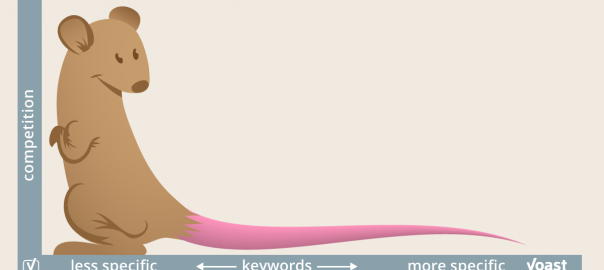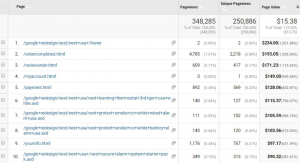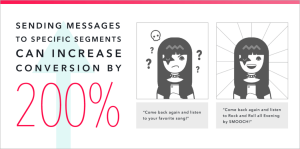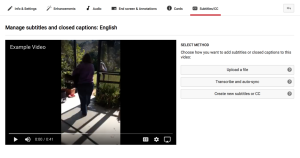My friends have a jewelry store. As their products are exceptionally beautiful, fine quality and hand-made, they have global ambitions.
However, the jewelry market is overcrowded, and giants like Tiffany & Co. make the online competition super tough.
Small businesses barely have a chance to rank high in global search engines for generic and highly competitive words and phrases like jewelry, jewelry shop, gold rings, necklace, earrings, rings, etc.
But…they can implement savvy long tail SEO strategies. Long tail SEO is an excellent idea if you want to attract a decent amount of high-converting organic traffic to any website. This is what we will discuss in today’s article.
What are Long Tail Keywords
Long tail keywords refer to the specific queries that include 3, 4 or 5 words or even longer. In general, the longer your long tail keyword is, the easier it is for it to rank high.
These keywords are characterized by a lower search volume and lower competition. It’s true that long tail phrases draw less traffic, but the traffic they do bring is more focused and valuable. This is because people who insert long tail keywords into the search engine box are specifically interested in your offer, so they are closer to the point of purchase in the sales funnel.
This makes the use of long tail keywords essential for boosting your revenues — but you need to know how to use them.
When you optimize for long tail keywords, you can more successfully inform your potential customers about your product or service.
For instance, the generic word jewelry doesn’t indicate any specific intent a buyer may have; it’s very broad.
By using this term in search engines, users may want various things.
These can range from wanting some general information about jewelry: something about its history, the different kinds of jewelry, what brands and designers produce it, what materials jewelry can be made out of or just to see an image of ancient Egyptian jewelry. Their intent can also be commercial.
All these various, untargeted questions are included in this one word. And, of course, the chances of conversion when a broad keyword is used are low.
But if a user goes for more specific terms like minimalist gold rings with tourmaline, he will be given a list of more tailored results. If users use commercial phrases like where to buy minimalist gold rings with tourmaline, they will be shown locations where direct purchases can be made.
The Search Demand Curve
Have you seen this chart before? It comes from the fantastic infographic introduced by the Webmag, where they explain the golden value of long tail SEO.
Webmag describes how to target those less competitive and hyper-specific terms because over 70% of all queries on the web are made up of long tail keywords.
What’s more, conversion rates for long tail keywords are 2.5 times higher than for broad terms. This concept brings an exceptional opportunity to the table.
Convincing, isn’t it?
How to Target Long Tail Keywords?
Implementing the long tail SEO strategy can be demanding; it’s important to approach this matter wisely. Start by researching keywords to find the most relevant long tail opportunities for your business.
How can you make sure your research is done properly? To begin, use your seed keywords. Go to the Adwords Keyword Planner, click on “Search for new keywords …”; then insert your head phrase and perform the research for each phrase separately.
Choose the relevant phrases that are more specific and still in demand.
Once the Keywords Planner part is finished, and you have new keywords before your eyes, plug them into the search box and carefully investigate the search results to uncover what variations people use. Collect all your finds on a spreadsheet.
Next, craft pieces of content that will contain all of your newly identified long tail phrases, and make sure to discuss them thoroughly. And, please, don’t just throw them into one article: one piece should include the keywords related to one chosen topic.
Long Tail Research Tools
Apart from Adwords Keyword Planner, there are a few other tools you’ll find useful for targeting the right long tail phrases.
First of all, I’d like to introduce you to Ubersuggest.org. This is a simple to use, a free research tool that will generate thousands of keyword variations with just one click. All you need to do is type in your broad phrase and click on the “suggest” button. The tool will do the rest.
KeywordTool.io is second on my list. It is also a free tool, similar to Ubersuggest.org. If you pay for an upgrade, you’ll be able to see search volumes.
Long Tail Keywords in Paid Search Marketing Campaigns
Long tail keywords – with high commercial intent – are perfect for organic search, but this strategy can also be leveraged in a PPC campaign.
That’s because, as I already mentioned, conversion rates for long tail keywords are 2.5 times higher, while the cost per click is significantly lower because of the lower competition level.
By using long tail keywords in PPC, you will be able to test what queries bring you the best results.
User Intent
Make sure you understand the user’s intent. The user’s intent is the core reason for performing the search in the first place. A specific need stands behind each search.
User intent might be even more relevant to your business goals and your revenue than the search volume of a keyword. Strategically chosen long tail phrases matching the user intent will attract well-qualified leads.
Qualified leads mean users who know what they are looking for and are almost ready to make a purchase. Taking user intent into consideration when selecting your keywords will help you improve conversion.
According to Crazyegg:
Here’s my thesis: User intent is the starting point for successful conversion optimization. If you fail in addressing customer intent, you fail in conversion optimization. If you succeed in addressing customer intent, then you succeed in conversion optimization. That’s a simple reality, and there’s no way around it.
Yeah!
The intent behind a keyword can be navigational, informational or commercial.
- Navigational – the searcher is trying to find a particular website
- Informational – the searcher is looking for specific information
- Commercial – the user wants to make a purchase or perform a specific online activity like subscribe, download something, etc.
For instance, the commercial intent is characterized by the presence of specific words: buy, price, reviews, deal, coupon, sale, purchase, etc. While how to and tips are common terms relevant to informational intent.
From the business perspective, keywords with commercial intent can be perceived as the most beneficial ones. Navigational and informational intent bring forth users that need more time before deciding to follow through with a purchase.
Nonetheless, all three main types of intent are important for your marketing strategy and should be targeted appropriately.
Long Tail Keywords Case Study
As we already stated, long tail keywords can bring you the bulk of the right organic traffic.
Let’s take a look at the case study of Uptowork – The Resume Builder. If you go to the keyword planner and check the search volume for “hobbies in a resume,” the tool will tell you that 1,900 people are Googling that keyword monthly.
Even if you rank first for that phrase (and we all know how hard that is), you can count on roughly 30% percent of that search volume.
That would be around 600-700 hits.
This post, however, generated over 6,500 sessions in a month:
How is that possible?
Long tail keywords.
The post generates traffic through thousands of long tail keywords. If you look at the incremental traffic each of them brings, the results will be humble at the very least. According to Keyword Planner, some of these keywords can bring you up to 10 users: the others none.
But in fact, there are thousands of people Googling thousands of different phrases, more or less related to the main keyword.
And that is real power! If you can optimize for thousands of keywords, you will get thousands of visitors.
You probably think that it’s impossible to optimize a text for so many different keywords.
And you’re right!
Fortunately, you don’t need to. So how do you get all that traffic?
All you need to do is give people the answers they are looking for.
- Research the topic.
- Make sure you read the comments under relevant articles.
- Check the related questions and answers on Quora.
And now just write naturally as your users do.
If you write for the users, use their language. And when you produce engaging content that answers their questions, the traffic will follow.
Wrapping Up
It looks like we’ve got it! Now you know what long tail keywords are, how long tail SEO can help you drive better traffic, and how long tail strategies should be implemented. The only thing that’s left to do is turn your knowledge into action. Go ahead! Test it out for yourself!
I hope that I’ve encouraged you to leverage your long tail opportunities in your day-to-day marketing.
Happy Marketing!
Do you have any experience with long tail keywords? Any advice or warnings that may be helpful to our readers? Tell us your story in the comments below.
Digital & Social Articles on Business 2 Community(106)












